

Example application LM macroscope: European garden spider (Araneus diadematus)
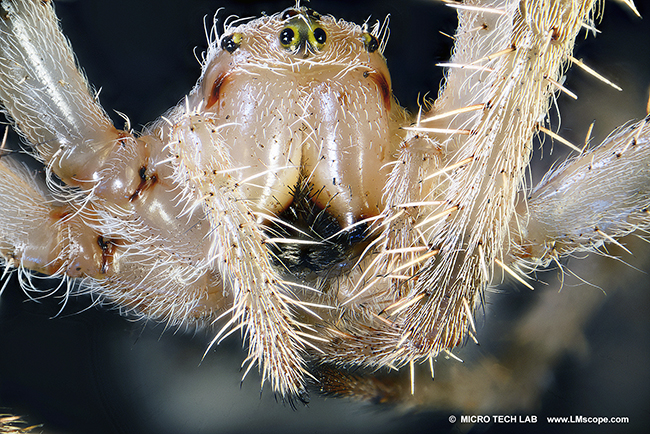
For a high-resolution image, click here
Equipment used: LM macroscope 24x with 24x magnification, Canon EOS 5D Mark IV
We examined a fascinating creature with our LM macroscope: the European garden spider. The LM macroscope has been designed for current cameras with big sensors. A special lens with a high numeric aperture of 0.25 helps to make the impressive details of this creature visible. Thanks to the focus stacking technique, an enormous increase in image quality can be achieved in professional level photography, as is evidenced by the stunning images of the European garden spider that we managed to take.
The European garden spider is the quintessential type of garden spider and the best-known spider species in Central Europe. Males reach a length of around 10mm, while females can be as long as 18mm. Colourings range from light brown to almost black. The European garden spider is very easily identified by the typical cross-shaped markings across its dorsal abdomen. Unlike many other spider species, the European garden spider has a two-year life cycle.
Anatomy:
Right at the front of the cephalothorax, on the chin, are the spider’s eight eyes and a pair of chelicerae, or jaws. These mouth parts, which can reach a considerable size, are common to all arachnids. The chelicerae consist of a powerful basal segment and movable fang, which is folded away in the resting position. If the spider bites, the fangs shoot out of their groove and inject the venom.
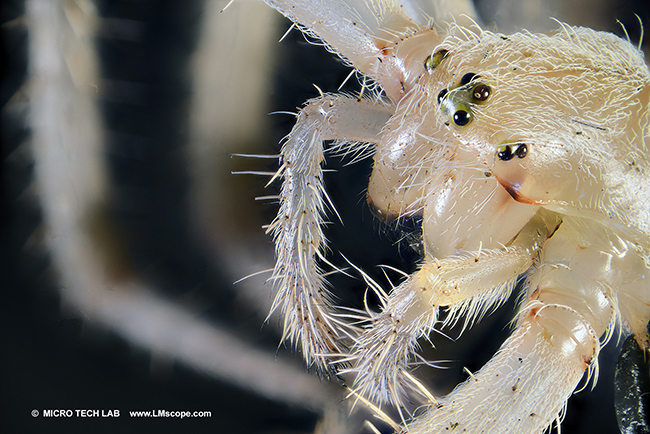
For a high-resolution image, click here
Equipment used: LM macroscope with 24x magnification, Canon EOS 5D Mark IV
The second pair of appendages are the sensory organs, whose scientific name is pedipalps. Although they look like legs, the spiders do not usually use them for running, but rather for capturing and holding on to their prey.
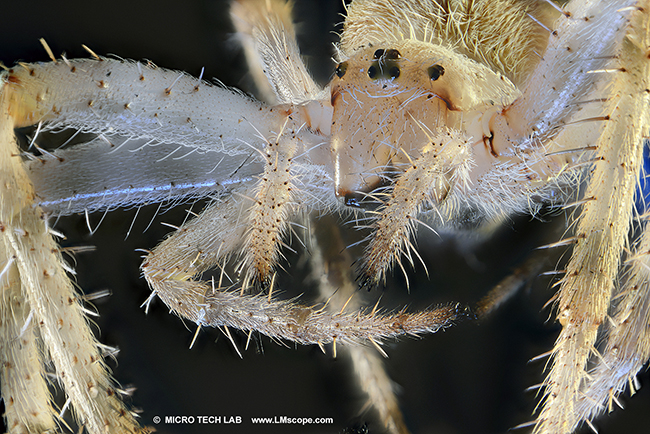
For a high-resolution image, click here
Equipment used: LM macroscope with15x magnification, Canon EOS 5D Mark IV
The European garden spider has eight main and secondary eyes.
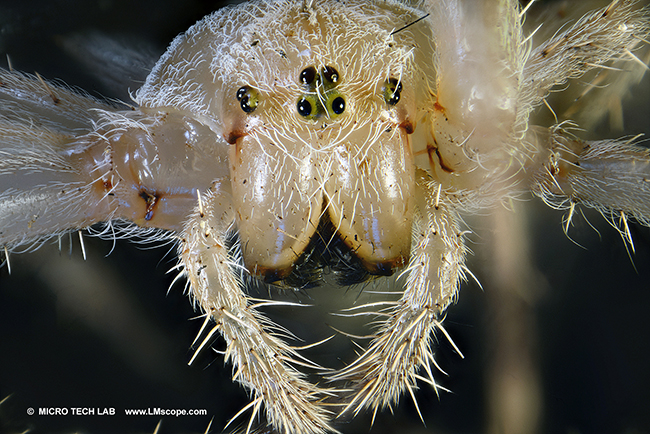
For a high-resolution image, click here
Equipment used: LM macroscope with 24x magnification, Canon EOS 5D Mark IV
The spider’s body is divided into two sections: at the front is the cephalothorax (prosoma) with the head, venom glands, stomach and all of the walking legs.
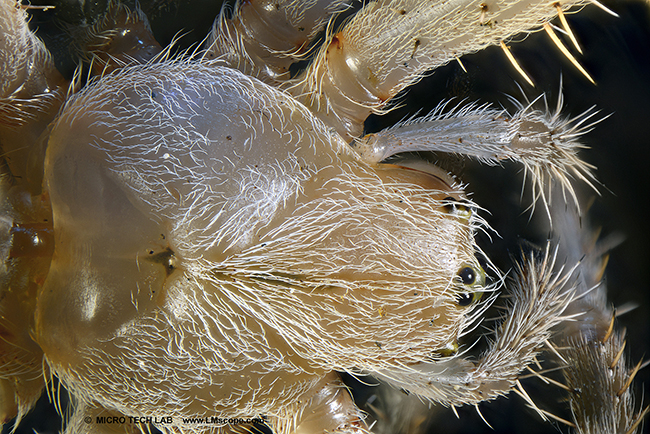
For a high-resolution image, click here
Equipment used: LM macroscope with15x magnification, Canon EOS 5D Mark IV
Behind, connected by a thin waist (petiole), is the abdomen with the internal organs and spinnerets that enable the spider to produce threads for a variety of purposes.
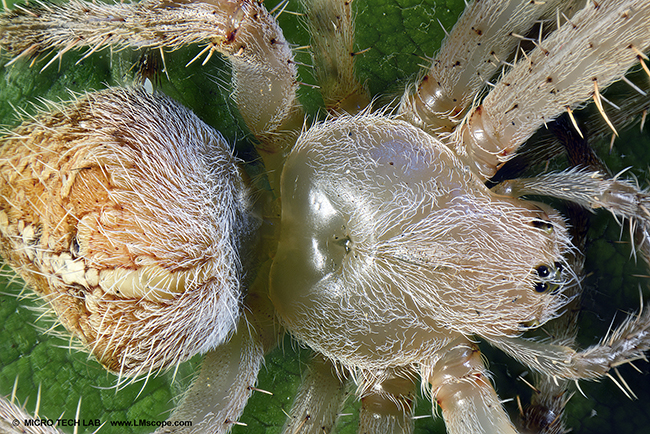
For a high-resolution image, click here
Equipment used: LM macroscope with15x magnification, Canon EOS 5D Mark IV
The prey – primarily insects – caught in the spider’s net is bitten and wrapped with thread secreted from its abdomen. To do this, the spider quickly turns its prey with its legs. The digestive enzymes expelled into the prey when the spider bites it break down its body tissues.
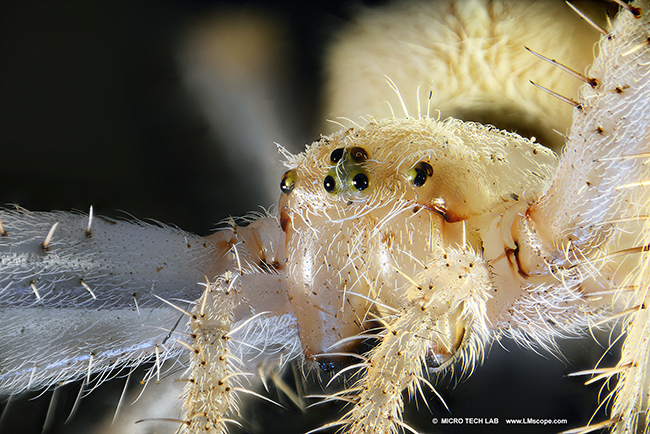
For a high-resolution image, click here
Equipment used: LM macroscope with 24x magnification, Canon EOS 5D Mark IV
Apart from a few exceptions, all spiders are venomous. The bite of a European garden spider may be unpleasant for humans, but has no long-term medical consequences.
The LM macroscope 24x (15x and 11x) has been designed for current APS-C and Four Thirds camera sensors. For full-frame sensors, we recommend the new LM macroscope 9x. LM macroscopes are equipped with plan achromatic, hard-coated objective lenses that offer excellent quality and are manufactured by hand in Austria. LM macroscopes are primarily designed for professional use (research, industry, universities, hospitals, etc.).